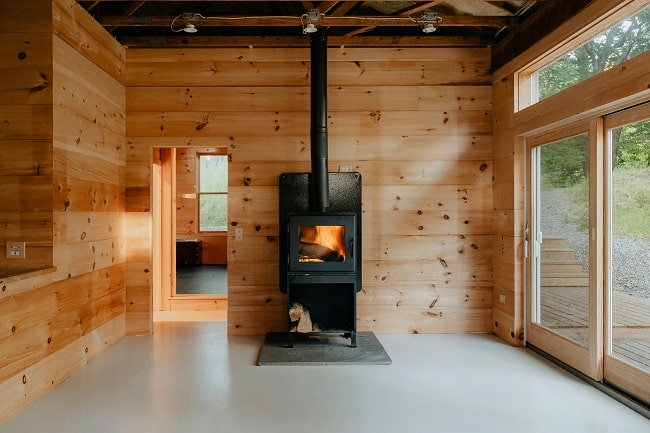As temperatures drop, a warm and cozy home becomes essential. Unfortunately, drafts and air leaks can make heating inefficient, causing energy bills to rise. Draft-proofing can make a significant difference, keeping your home comfortable and saving you on heating costs. With a few focused steps to seal air leaks, you’ll reduce heat loss, improve energy efficiency, and enjoy a consistently warm home throughout winter.
In this guide, we’ll cover how to find drafts, effective sealing techniques, and practical steps to draft-proof your home.
Why Draft-Proofing Matters
Draft-proofing does more than keep your home warm. Here’s why it’s worth the effort:
- Lower Heating Costs: Sealing air leaks reduces strain on your heating system and can lower energy bills significantly.
- Enhanced Comfort: A draft-free home maintains a steady, comfortable temperature for better winter living.
- Moisture Protection: Proper sealing helps prevent moisture intrusion, reducing the risk of mold and mildew.
- Improved Energy Efficiency: A draft-proofed home is more eco-friendly and cost-effective, contributing to a lower carbon footprint.
Identifying Air Leaks in Your Home
The first step in draft-proofing is to locate air leaks. Drafts typically occur around doors, windows, and structural points that connect to the outdoors.
Common Sources of Drafts
- Doors and Windows: Gaps here are the most common sources, especially if seals or weatherstripping are damaged.
- Attic and Basement: Unsealed spaces allow warm air to escape and cold air to enter.
- Electrical Outlets: Outlets on exterior walls can let cold air seep in.
- Vents and Ducts: Leaky ducts or poorly sealed vents are common heat-loss points.
- Fireplaces and Chimneys: If the damper is not tightly closed, these can let in drafts.
How to Identify Drafts
- The Candle Test: Light a candle near suspected areas; if the flame flickers, you’ve found an air leak.
- Hand Test: On a windy day, run your hands near windows, doors, and exterior walls to feel for cold air.
- Thermal Camera: A thermal imaging camera highlights areas of heat loss.
- Energy Audit: Many utility companies offer energy audits to locate and measure drafts in your home.
How to Seal Air Leaks and Draft-Proof Your Home
Effective draft-proofing involves sealing air leaks with techniques suited to each specific area.
1. Windows and Doors
These areas are the primary sources of drafts. Here are some effective solutions:
- Weatherstripping: Apply weatherstripping around frames; adhesive foam, V-strip, and tubular rubber work well for sealing gaps.
- Caulking: Use caulk to seal small gaps (up to ¼ inch) around windows and doors. Opt for weather-resistant caulk for exterior use.
- Draft Stoppers: Add a draft stopper or door sweep at the base of doors to block gaps.
Tip: For outdoor caulking, use silicone-based options, which are waterproof and flexible to handle temperature fluctuations.
2. Attic and Basement
Attics and basements are hotspots for heat loss. Insulating these areas is critical for overall warmth.
- Insulate Attic Access: Install insulation around attic doors to prevent heat escape.
- Seal Cracks and Gaps: Use expanding foam for large cracks and irregular gaps.
- Floor and Wall Insulation: Consider insulating basement floors and walls to stop cold air entry.
Tip: Focus on areas around pipes, ducts, and vents, as these spots often go overlooked.
3. Electrical Outlets and Switches
Exterior wall outlets are subtle but frequent sources of drafts.
- Outlet Gaskets: Install foam gaskets behind outlet and switch covers to insulate them.
- Plug Covers: Use plastic plug covers for unused outlets to block drafts.
Tip: Always turn off the power to outlets and switches before removing covers.
4. Fireplaces and Chimneys
Fireplaces are notorious for heat loss. Seal them when they’re not in use to prevent drafts.
- Close the Damper: Ensure the damper is tightly closed.
- Chimney Balloon: Use an inflatable chimney balloon to block drafts when the fireplace is inactive.
- Fireplace Doors: Installing glass doors can further reduce drafts.
Tip: Remember to remove chimney balloons before lighting a fire.
5. Vents and Ducts
Poorly sealed ducts and vents are responsible for significant heat loss. Sealing these areas increases your heating efficiency.
- Duct Sealing Tape: Use foil-backed duct tape or mastic sealant for gaps in ductwork.
- Vent Covers: Cover unused vents with magnetic vent covers.
- Insulated Duct Wrap: Wrap ducts in unheated areas with insulation to prevent heat loss.
Tip: Regularly check ducts for gaps or loose connections, as these can worsen heat loss.
Additional Tips for Draft-Proofing Your Home
To enhance warmth and reduce heating costs further, try these additional strategies:
- Use Heavy Curtains: Insulated curtains or thermal drapes help retain heat. Open them during the day to let sunlight in and close them at night.
- Place Area Rugs: Rugs provide insulation and comfort on cold floors.
- Move Furniture Away from Drafty Areas: Keep furniture toward the room’s center to avoid draft exposure.
- Use Door Snakes: These fabric stoppers block drafts under doors.
- Humidify Your Home: Moist air feels warmer, allowing you to lower the thermostat without sacrificing comfort.
Benefits of Draft-Proofing Beyond Winter
Draft-proofing isn’t just beneficial during winter. Here are additional year-round advantages:
- Enhanced Cooling in Summer: Sealed drafts keep cool air inside, improving air conditioning efficiency.
- Higher Home Value: Energy-efficient updates like draft-proofing can boost your home’s value.
- Improved Air Quality: Sealing leaks reduces the infiltration of outdoor dust, pollen, and pollutants.
Frequently Asked Questions
How much can draft-proofing save on heating costs?
Draft-proofing can save up to 20% on heating costs by reducing heat loss and increasing efficiency.
Can I draft-proof my home myself, or should I hire a professional?
Most draft-proofing tasks, such as weatherstripping and caulking, are DIY-friendly. However, more extensive insulation may benefit from professional help.
How often should I inspect my home for drafts?
Inspect annually, ideally in the fall, before winter begins.
Are there eco-friendly options for draft-proofing?
Yes, many materials, such as low-VOC weatherstripping and eco-friendly caulk, are available.
What’s the best way to seal large gaps?
Expanding foam sealant is ideal for larger gaps, especially in irregular areas like attics and basements.
Conclusion
Draft-proofing is a practical, cost-effective way to keep your home comfortable and energy-efficient all winter. By identifying and sealing air leaks, you’ll prevent heat loss, lower your energy bills, and create a more sustainable home environment. With a few straightforward steps and some simple adjustments, you’ll have a draft-free, winter-ready home. So grab your caulk gun, weatherstripping, and draft stoppers, and enjoy a cozy winter season!
Suggested References
- Energy Star (www.energystar.gov) – For comprehensive guides on energy-efficient home improvements and sealing techniques.
- U.S. Department of Energy – Home Energy Saver (www.energy.gov) – Provides tips on how to save energy in homes, including a detailed section on draft-proofing and insulation.
- American Council for an Energy-Efficient Economy (www.aceee.org) – Offers resources and research on energy efficiency for homes, including winter-proofing strategies.
- Environmental Protection Agency (EPA) – Indoor Air Quality (www.epa.gov) – Useful for information on how sealing air leaks can improve indoor air quality.
- This Old House – Draft-Proofing Tips (www.thisoldhouse.com) – Practical, DIY-focused guides on draft-proofing windows, doors, and more.
- National Resources Defense Council (www.nrdc.org) – Discusses eco-friendly options for home insulation and draft-proofing materials.

